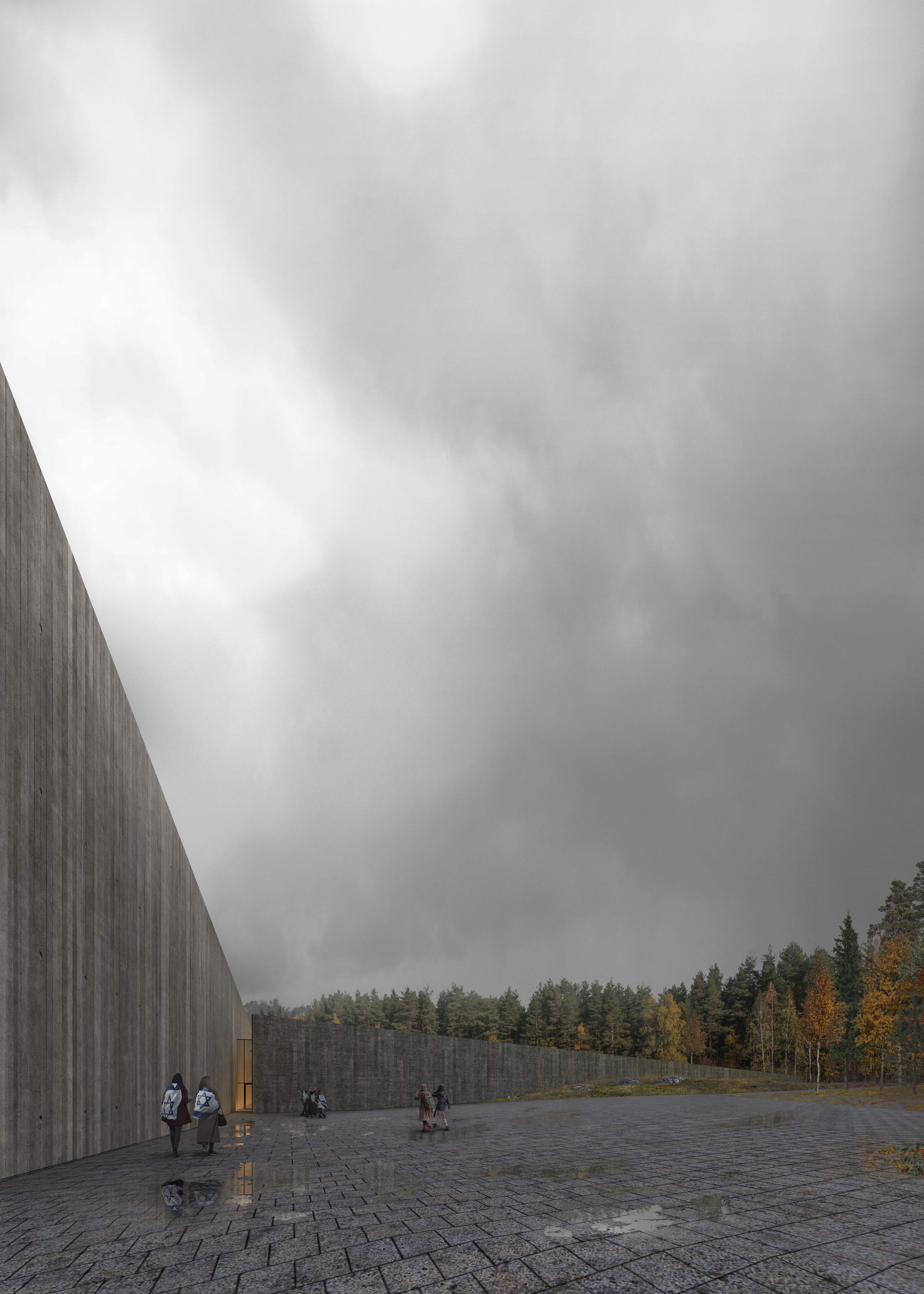
MUSEUM AS A PATH
The museum building introduces visitors to the traumatic theme of death and extermination. The abstract form of raw, separated front walls of the facility, divided by a narrow crevice, signifies the transition from ordinary everyday life to the concentration required by the experience of the place. The building's form and its dark interior not only provide an appropriate setting for the substantive beginning of the narrative but also guide visitors along a consciously crafted path. This path leads them consciously through tight and dark exits from the museum directly onto a route towards the evocative spaces of the extermination and labor camp monuments. This pathway is physically separated from the nearby parking and from individuals who have not yet commenced their tour, from a world that can still be heard but can no longer be seen.

LOCATION. ARRIVING AT THE TREBLINKA MUSEUM SITE
Many excursions arrive after several hours of travel, distant from an atmosphere of concentration and often emotionally unprepared to confront the significance of the place. Before fulfilling its primary educational role, the new museum object must provide the opportunity to meet daily needs. That's why, from the north side, there is a separate entrance to the sanitary facilities and gastronomy spaces located within the object, accessible from outside.

SQUARE AND MUSEUM. EXPERIENCING THE PASSAGE
The unambiguous form of the object, preceded by a raw square—intentionally devoid of benches and lacking a recreational character—slowly immerses visitors in the atmosphere of the place. The square is not comfortable but holds a public character, allowing for louder behavior from visitors after their journey. Nevertheless, the granite floor descending toward the entrance and the demarcation of its space by two equally stark walls, maintained in an aesthetic convention akin to nearby monuments, build up increasing tension. This tension culminates at the point where both walls meet in the form of a crevice. Crossing this boundary signifies a transition from the earthly realm into the world of stories about suffering and marks the beginning of a journey of experiencing, from which there is no facilitated return.


ENTRANCE AREA, EXHIBITION, PATH TO THE CAMP SPACES
The overwhelming, raw-textured space of the hall, devoid of connections to the surrounding forest, is illuminated only from above. Immersed in semi-darkness, the exhibition takes the form of a pathway with an unfolding narrative. As visitors progress, the ceiling gradually lowers above their heads, culminating in low and narrow full doors. Subsequently, we pass through a covered and dark narrow external space, strung along the path that directly leads us to the moving monuments.
LANDSCAPE ARRANGEMENT
The project consciously avoids planning any deforestation or new plantings, leaving the vegetation as it was found, with an untouched forest connected to historical events.